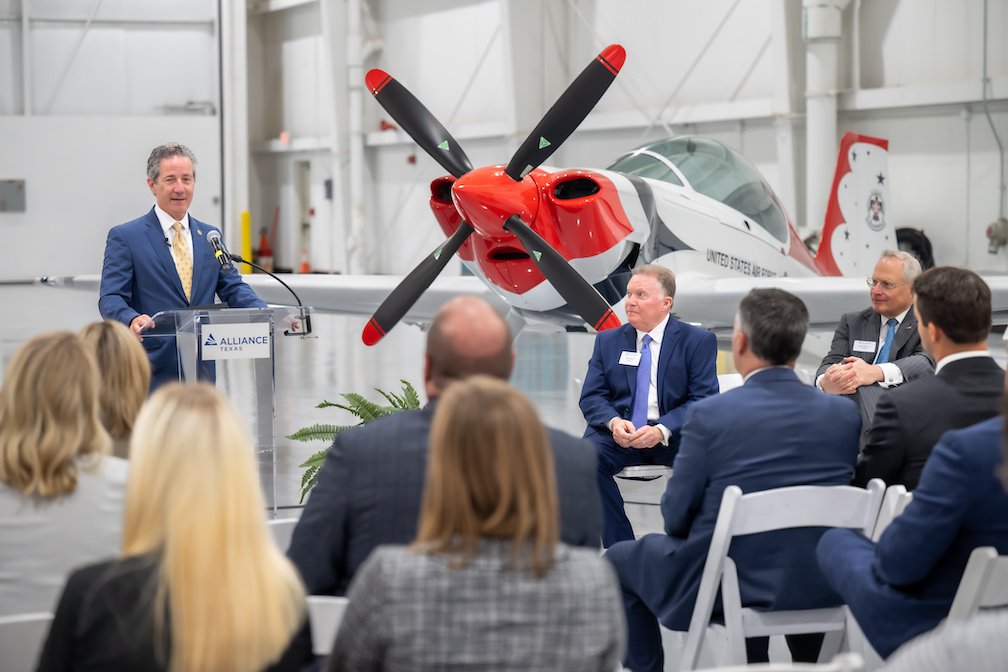More than 90 years ago, civic leaders in Fort Worth and Dallas picked up a dream of predecessors of turning the Trinity River into a navigable waterway connecting the North Texas region to the Gulf of Mexico.
Or Gulf of America. Or whatever.
The idea actually began in Dallas in the 19-teens.
By 1930, Amon Carter wanted a piece of the action for Fort Worth. He and John Carpenter of Dallas were the driving forces in forming the Trinity Improvement Association to push for canalization of the river.
Carter and his Dallas counterparts kept the canal dream alive through the mid-20th century.
Their sons, Ben Carpenter and Amon Carter Jr., carried the torch through the 1950s and ’60s as the Trinity Improvement Association and the Trinity River Authority pressed Congress for funding.
By 1965, thanks in part to the support of President Lyndon B. Johnson and Congressman Jim Wright of Fort Worth, the Trinity River Project was officially authorized for construction. (LBJ, in fact, used the issue to try to force Amon Jr., by then publisher of the Fort Worth Star-Telegram, to fire reporter Bascom Timmons, according to historian Robert Caro. They agreed to a phasing out of Bascom Timmons.)
It’s no wonder Houston leaders — especially Roy Hofheinz — were so insistent about keeping major league baseball out of North Texas, given all the commerce DFW had tried to take from them. (Of course, that had nothing to do with the canal.)
The ambitious $1.6 billion canal plan envisioned a 200-foot-wide, nine-foot-deep barge canal stretching from the Gulf to Dallas–Fort Worth, complete with 21 locks, three dams, and raised bridges to accommodate barge traffic, as well as lots and lots more mosquitos.
The plan eventually died on the vine in the mid-1970s.
Fort Worth and Dallas, however, eventually got their port of entry in the form of an industrial airport.
Perot Field Fort Worth Alliance Airport has been everything and more that its visionaries anticipated more than 35 years ago, becoming the dominant logistics hub for the southwestern U.S.
That’s all part of a report released this week by the Texas Comptroller’s Office, which showed that AllianceTexas accounted for $834.6 million in trade in 2024, up 550.7% from 2016.
This vast inland port serves as a vital link in the nation’s supply chain, channeling freight from Los Angeles, Long Beach, and Houston via intermodal rail to Mexico’s nearshoring operations — and moving more than half of all U.S. freight tonnage that passes through Texas.
Since its inception, AllianceTexas has attracted $16.3 billion in total investment — $15.2 billion from the private sector and $1.1 billion from the public sector — and has supported approximately 137,000 jobs statewide.
The project has also generated $4.17 billion in cumulative property taxes since 1990, including nearly $344 million in 2024 alone, benefiting cities, counties, and school districts across Tarrant and Denton counties.
AllianceTexas is among 32 official ports of entry in Texas that serve as critical gateways to global trade. Ports of entry within the state of Texas accounted for $1 trillion in international trade in 2024, according to the study.
“Ports are key to Texas’ economic strength — they power trade, jobs and innovation,” said acting Texas Comptroller Kelly Hancock on a stop Monday at AllianceTexas during his “Good for Texas Tour: Ports Edition.”
“AllianceTexas is a clear example of how forward-thinking infrastructure keeps our economy strong and competitive worldwide.”
Hancock, a Fort Worth native and former state senator, was appointed by Gov. Greg Abbott as acting comptroller this summer after Glen Hegar resigned to become chancellor of Texas A&M.
As the state’s chief financial officer, the comptroller oversees the state treasury, collects taxes, and provides accurate revenue estimates to guide the biennial legislative budgeting process.
Hancock is running for election to the full-time post, a four-year term, next year.
According to the report, the top export commodities by value from AllianceTexas in 2024 were machinery and mechanical appliances ($324.8 million), electric machinery and equipment ($276.6 million) and aircraft and spacecraft equipment ($116 million). The top import to the port was special classification provisions ($46.2 million) — commodities that have been returned after they have been exported, such as items used for exhibitions.
Alliance began as a bold experiment in public-private partnerships.
Hillwood, working with the FAA and the City of Fort Worth, launched AllianceTexas in 1989 around Perot Field Fort Worth Alliance Airport — the world’s first industrial airport. The 27,000-acre master-planned development now spans northern Fort Worth and nearby cities, home to more than 500 global companies including FedEx, Amazon Air, MP Materials, Embraer, Gulfstream, Target, Henry Schein, and Topgolf Callaway Brands.
Hillwood Chairman Ross Perot Jr. and its president, Mike Berry, were also in attendance on Monday.
AllianceTexas is one of Texas’ two intermodal logistics facilities connecting air, ground and rail, allowing businesses to take advantage of trade via all three modes of transportation.
All of this area was akin to the wild frontier 40 years ago, all of it, except for cattle and horses, sound asleep seven days a week.
Today it’s an international economic hub, one of Texas’ two intermodal logistics facilities connecting air, ground, and rail.
That is, trade via three modes of transportation, except, notably, water.
It all worked out in the end. Amazing how that happens.
And there is a lot more meat on this bone.

